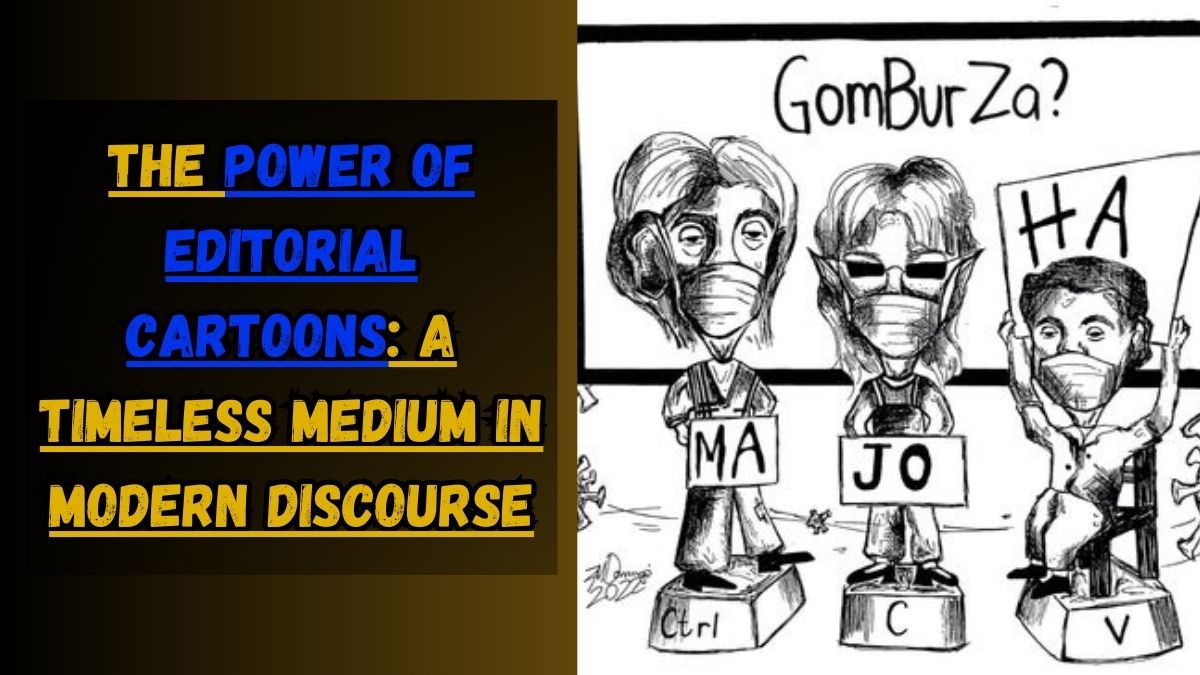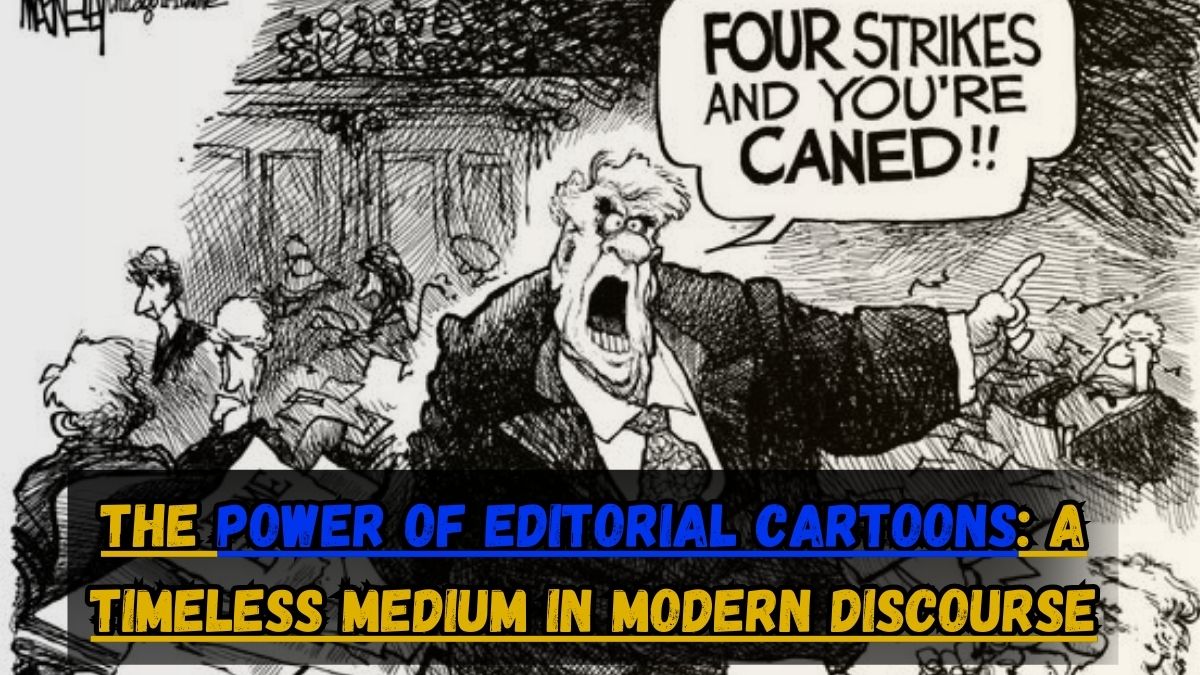In the bustling landscape of digital media and social networking, where attention spans wane and information overload are the norm, the Editorial Cartoons stands as a beacon of wit, insight, and satire. Nestled amidst the headlines and articles, these visual commentaries wield a unique power to distill complex issues, provoke thought, and evoke emotion in a single frame. From political punditry to societal critique, the editorial cartoon has etched its mark on history, transcending cultural barriers and resonating across generations.
- 1 The Evolution of Editorial Cartoons: From Print to Pixels
- 2 The Art of Visual Persuasion: Communicating Complex Ideas with Simplicity
- 3 Harnessing Humor and Satire: The Subversive Power of Laughter
- 4 Navigating Controversy: The Fine Line Between Provocation and Offense
- 5 The Enduring Legacy of Editorial Cartoons: A Testament to Free Speech and Creative Expression
- 6 Conclusion: Embracing the Art of Visual Discourse
- 7 Q: What are editorial cartoons?
- 8 Q: Why are editorial cartoons considered a timeless medium?
- 9 Q: How do editorial cartoons contribute to modern discourse?
- 10 Q: What makes editorial cartoons powerful?
- 11 Q: Are editorial cartoons always effective in conveying their message?
The Evolution of Editorial Cartoons: From Print to Pixels
Dating back to the 18th century, editorial cartoons have served as potent instruments of dissent and dialogue. Originating in newspapers and periodicals, these illustrated critiques provided a visual narrative to accompany written commentary, amplifying the message and engaging readers on a visceral level.
Over time, as technology advanced and mediums diversified, editorial cartoons transitioned from ink and paper to the digital domain, proliferating across online platforms and social media feeds. Despite this evolution, the essence of the editorial cartoon remains unchanged – to encapsulate the zeitgeist, challenge authority, and spark discourse.
The Art of Visual Persuasion: Communicating Complex Ideas with Simplicity
At the heart of every editorial cartoon lies the art of visual persuasion. Through strategic use of symbols, caricatures, and satire, cartoonists distill intricate political, social, and cultural issues into digestible nuggets of insight.
Whether lampooning public figures, dissecting policy failures, or highlighting societal injustices, these visual narratives cut through the noise, delivering a powerful message with clarity and impact.
By leveraging the inherent simplicity of imagery, editorial cartoons possess a universal language that transcends barriers of literacy and language, speaking directly to the hearts and minds of audiences worldwide.

Harnessing Humor and Satire: The Subversive Power of Laughter
One of the hallmark traits of editorial cartoons is their adept use of humor and satire to convey critique and commentary. From sharp wit to biting sarcasm, cartoonists employ a diverse arsenal of comedic techniques to puncture pomposity, expose hypocrisy, and challenge the status quo. By infusing their illustrations with levity and laughter, editorial cartoonists disarm their subjects and invite readers to confront uncomfortable truths with a smile.
In an era rife with polarization and division, humor serves as a potent antidote, fostering empathy, fostering empathy, and fostering dialogue amidst disagreement.
While editorial cartoons thrive on controversy and provocation, they also walk a fine line between incisive commentary and outright offense. In an increasingly sensitive and politically charged landscape, cartoons have sparked debates over issues of cultural sensitivity, representation, and ethical boundaries.
From contentious depictions of religious figures to caricatures that perpetuate harmful stereotypes, cartoonists must tread carefully to ensure that their satire does not stray into the realm of bigotry or discrimination. As guardians of free expression, they bear a responsibility to wield their pens with wisdom and empathy, mindful of the diverse perspectives and sensitivities of their audience.
The Enduring Legacy of Editorial Cartoons: A Testament to Free Speech and Creative Expression
In an age where information travels at the speed of light and opinions abound, the enduring legacy of editorial cartoons stands as a testament to the power of free speech and creative expression. From the iconic works of Thomas Nast to the digital masterpieces of contemporary satirists, these visual commentaries serve as snapshots of history, capturing the spirit of their time with timeless relevance.
As guardians of democracy and champions of dissent, editorial cartoonists occupy a unique position in the pantheon of journalism, wielding their pens as swords and shields in the battle for truth and justice.
Conclusion: Embracing the Art of Visual Discourse
Editorial cartoons occupy a unique and irreplaceable role in the tapestry of modern discourse. With their ability to distill complex ideas into simple yet powerful images, they serve as catalysts for thought, agents of change, and champions of free speech. As we navigate the turbulent waters of the 21st century, let us embrace the art of visual discourse, celebrating the rich legacy of editorial cartoons and the enduring power of creative expression.
Q: What are editorial cartoons?
A: Editorial cartoons are visual commentaries on current events or political issues. They often use satire, humor, or caricature to convey a message or critique.
Q: Why are editorial cartoons considered a timeless medium?
A: Editorial cartoons have been around for centuries and continue to be relevant because they succinctly capture complex ideas and spark discussion in a visually engaging manner.
Q: How do editorial cartoons contribute to modern discourse?
A: Editorial cartoons offer a unique perspective on contemporary issues, challenging viewers to think critically, question authority, and engage in public debate.
Q: What makes editorial cartoons powerful?
A: Editorial cartoons have the power to provoke thought, evoke emotion, and influence public opinion through their combination of artistry and commentary.
Q: Are editorial cartoons always effective in conveying their message?
A: While editorial cartoons can be powerful tools for communication, their effectiveness may vary depending on the audience’s interpretation and the clarity of the message.
Also Read:
Kelly Payne Wikipedia, Bio, Age, Parents, Kids (Stephen Fleming’s Wife)
Jeff Machado Wikipedia, Age, Bio, Height, Wife, Death, Net Worth
Ghostbusters Frozen Empire Review – Bustin’ Made Me Feel… Meh.
Kristy Greenberg Wikipedia, Bio, Age, Husband, Age, Married
Alyssa Quinn Biography Age, Family, Profession, and More
